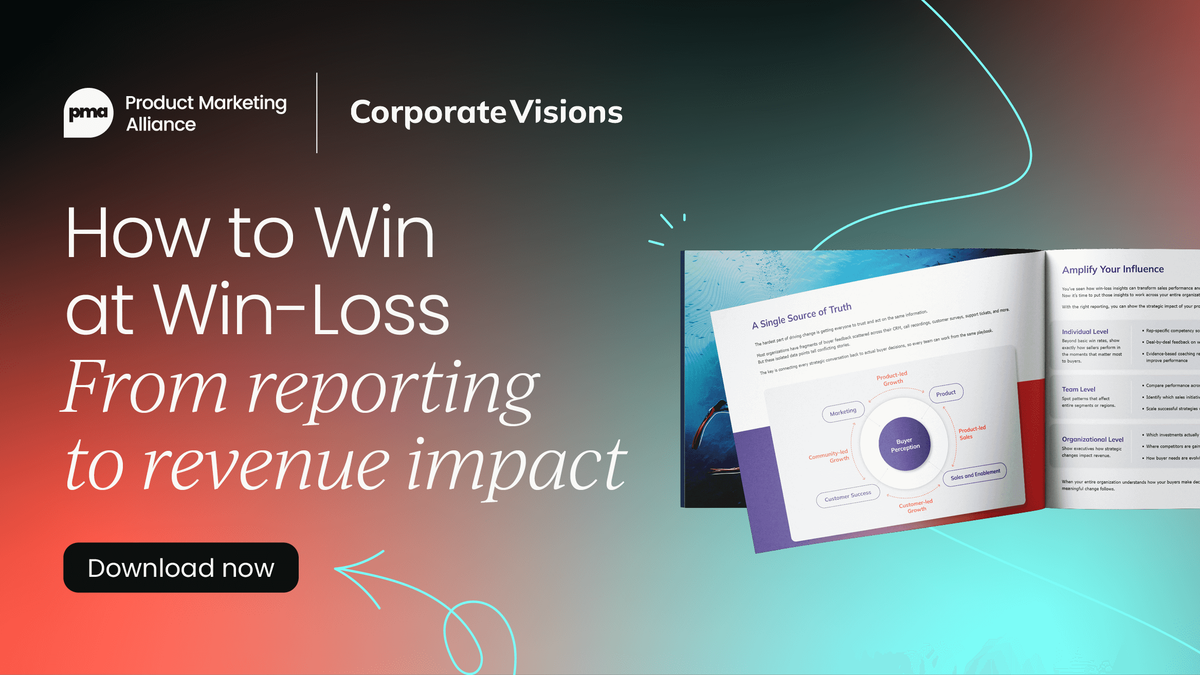The pace of change in competitive intelligence (CI) isn’t slowing down – and, in 2025, it’s more dynamic, data-driven, and business-critical than ever.
But what exactly is changing? From AI-enhanced analysis to real-time battlecards, CI is no longer a siloed function. It’s embedded across sales, product, and executive strategy.
1. Expansion of CI teams and budgets
This means recognizing the value of competitive intelligence, which more and more companies are doing – a.k.a., investing more in their CI capabilities.
Team sizes have increased by 24% from previous years, which shows the growing importance of CI, as well as a commitment to deeper market analysis and development of competitive strategies.
2. The AI revolution
In competitive intelligence, AI is a game-changer. Recent data shows a whopping 76% year-over-year increase in AI adoption within CI teams, with 60% of teams now using AI daily.
Also, IBM research says that 46% of executives in 2025 are scaling AI strategically, not just experimenting.
Why’s this? AI can analyze massive volumes of unstructured data (reports, social posts, product listings) in seconds, and it automates routine tasks and surfaces powerful insights faster than humans ever could.
In 2025, expect AI to evolve from an assistant to a strategic partner, meaning CIs are changing from analysts into insight-driven advisors.
“I use AI really frequently for competitive analysis and market insights. So, trying to understand what our competitors in the consumer wearable space are doing and looking at new market entries.
“[If] we're thinking about launching in Japan – how do people in Japan actually think about and understand health and wellness differently? What is their appetite for something like wearing a smart ring in this industry?
“I'll really use that to get a general sense of the market landscape and of competitive trends and then hone in on specific use cases there." – Bryn Harrington, Product Marketing Lead at Ōura
3. CI tools are booming
The CI market stood at roughly $50.9 billion last year, with projections hovering around $122.8 billion by 2033.
Several things are leading to this growth:
- Intensifying competition in digital and global markets
- Proliferation of generative AI-powered CI platforms
- Demand for real-time insights and strategic agility
In short, competitive intelligence isn't a luxury, it's a necessity, and its importance will continue to grow as more industries embrace data-driven decisions.
More small and medium sized businesses (SMBs) are using CI tools as well, especially with cheaper cloud options and affordable AI platforms.
So, CI insights won’t just be a thing for larger firms, but for everyone.
4. Moving towards holistic market and CI
Traditional CI focuses on direct competitors: tracking pricing, campaigns, launches, etc. That narrow view won’t cut it in 2025.
Modern competitive intelligence trends emphasize “holistic” market and competitive intelligence (M&CI), which includes:
- Analysis of adjacent industries
- Broader market forces
- Regulatory shifts
- Partner and supply-chain dynamics
This matters because companies now compete across ecosystems. Nike isn’t just competing with Adidas, they’re battling technology firms, influencers, health apps, etc. CI connects the dots.
Look for top CI platforms to integrate M&CI, moving beyond mere competitor tracking to deliver strategic foresight across functions, from marketing to R&D to supply chains.
5. Conversational interfaces
Another notable competitive intelligence trend is the rise of conversational interfaces powered by generative AI.
Instead of static dashboards, platforms will offer chat-based intelligence: ask a question in natural language, get an instant answer.
This CI experience mirrors asking an analyst, so it’s quick and intuitive, a great combo for busy CIs.

6. Dark data
Companies accumulate dark data (emails, archived documents, voicemails, customer transcripts, etc.), which is typically ignored – in fact, around 90% of data is unstructured and underused.
Using AI-driven tools like knowledge graphs, CIs can transform dark data into strategic insights in 2025 and beyond.
That might mean uncovering recurring product complaints, detecting emerging competitive threats, and spotting untapped market behaviors.
7. Wargaming
Some CI practitioners are blending CI insights with business wargaming, structured simulations modeled on military exercises.
This approach helps teams stress-test strategies and anticipate competitor moves in dynamic scenarios.
By combining CI data with wargaming, you can put strategies in place, such as: “If competitor X lowers price, we’ll do Y” or “If regulatory pressure increases, we’ll pivot Z”.
8. The rise of the CIO
Competitive intelligence is far from siloed anymore, as it’s becoming an executive-level role. Some orgs are introducing jobs like Chief Intelligence Officer and Chief AI Officer to embed CI across functions.
This means the CI function is becoming foundational on par with finance, marketing, or HR.
This shift isn’t just about a new title, but about weaving intelligence into everything, from sales and product to strategy and operations.
Leaders in these new roles are often building teams that combine human research with AI-powered insights, helping the business spot patterns, predict trends, and move with confidence.

9. Data quality and privacy
According to BARC, the most important intelligence trends are data security, quality management, and governance.
This is because CI relies on trust: your decisions are only as good as your data.
In 2025 and beyond, you can expect stricter compliance with regulations like GDPR, and CI platforms will have to focus more on ensuring transparency and reliability.
10. Adoption of real-time data processing
The demand for immediate insights has led to the adoption of real-time data processing in CI.
Organizations use advanced analytics platforms to monitor operations as they happen, allowing for fast responses to changes in the market.
Adopting real-time data enrichment enables 25% faster decision-making and drives 30% higher revenue growth, so it’s crucial to maintain agility and react quickly.
11. Use of synthetic data
Companies are increasingly utilizing synthetic data – defined by Gartner as “data generated by applying a sampling technique to real-world data or by creating simulation scenarios where models and processes interact to create completely new data not directly taken from the real world.”
This is becoming a popular trend in CI because teams can test things like product positioning and pricing strategies using synthetic customer or market response data, which allows you to experiment before committing to real-world rollouts.
In short
CI is no longer just about knowing what your competitors are up to, it’s also about building a smarter, more agile business.
The companies that win are the ones that learn faster, react quicker, and make decisions based on sharp, up-to-date insight.
Tired of win-loss reports collecting dust? This ebook shows you how to turn your insights into action and revenue, so get your free copy.







.png?v=89c4a5be17)